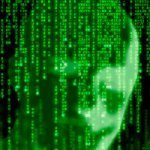Leaderboard
Popular Content
Showing content with the highest reputation on 09/29/22 in all areas
-
Bit more than that; don't forget the inner product. I'd say that that's the central aspect of Hilbert spaces. Depends on what you mean by "aspect" or "attribute"; I'd also be careful about what you mean when you say "something like its own dimension". If you mean that each particle (and simplifying to quantum mechanics, where there is no particle creation or annihilation), then kind-of, but not really. To explain further, and in some formality: the state space for a combination of particles comes from the (completion of the) tensor product of the state spaces of the individual particles, not a direct sum. Sorry, but I don't really have a less technical explanation for what that means. I'd say that each eigenstate a QM "entity" can be in can be thought of somewhat separately, yes (until you get some time evolution that mixes between eigenstates). To my recollection (which is admittedly rusty), the use of "state" can be somewhat ambiguous; it can either be used to mean a single eigenstate (of an unspecified operator), or can mean an arbitrary mixture. In the latter case, I'd say that the answer to your question is "no"; for example, the the states |a>, (3/5) |a> + (4/5) |b>, and |b> cannot really be thought of as in "different dimensions".1 point
-
But what is space without matter? Isn't it just distance, and specifically distance between things? Isn't the vacuum itself observer-dependent? Space isn't made of some "stuff" that is measurable independent of other things, I think. Anyway I think scientific answers don't depend on those questions, because science deals with definitions and measurements. If expansion is defined as "expansion of the metric", and not of "space", then it doesn't matter what space is. If expansion is defined only for gravitationally unbound objects, and defined as their increasing separation, then I think there's no expansion without that separation, and no way to apply it to gravitationally bound masses. But yes, it doesn't make sense that matter would "stop" expansion. For example, consider 2 comoving distant galaxies that are separating due to expansion. Then say there are 2 gravitationally bound small masses somewhere between them. There is metric expansion between the 2 galaxies. It seems fine to say that space is expanding everywhere throughout the distance between them. What is happening between the 2 small masses? The definitions can answer that! In comoving coordinates, the galaxies have fixed coordinates, and the measure of distance itself is increasing. In these coordinates, for the 2 smaller masses to remain a fixed distance from each other in their local coordinates, one or both must be changing location in comoving coordinates. That gives the answer, that space is expanding between the gravitationally bound masses and they're moving through that space (at the very least mathematically!). But then, we can also consider the local coordinates of the gravitationally bound masses, where in this example they're stationary. You really can say that the masses aren't moving through space (which means nothing more than that they're not changing location in these coordinates). The metric is covariant but I'm still not sure if expansion would be something that is an absolute part of the metric, or dependent on the coordinates. I think it's reasonable to say "space is still expanding here" but with the implication that it's referring to space generally, or in other coordinates, not space in local coordinates. Interesting, I hadn't thought of the physics of the model beyond being an example. I think that even a bunch of photons scattered in all directions would start separation because of decreased mass density.1 point
-
Nothing fancy about Hilbert spaces. They are just ordinary cartesian x,y,z... 'spaces' that have an infinite count of dimensions. So the space is not ordinary physical space - it is phase space, which is a fancy way of saying that it has as many dimensions as necessary to draw a 'graph' in.1 point
-
I was breeding on a similar, precise way to formulate what we really learn from Bell-like experiments. In the first place, we learn that the predictions of QM are correct. (I suppose that is the reason that Feynman threw Clauser out of his office.) Secondly, nearly the same formulation you used: No system, based on classical physics, can reproduce all predictions of QM. Only if you would introduce 'action at a distance', one could. But we know this is classically impossible, because of SR. @bangstrom: I think there is a rather clear experiment that shows that the correlation between the 2 distant measurements cannot be causal. And 'not being causal' implies: no communication is taking place between the two measurements, no superluminal signals none of the more or less equivalents of causality: effect, action, interaction, etc. applies. Now this is the experiment: in a Bell like experiment the distances of the detectors are exactly equal. So, assuming we use a photon/polarisation experiment, int the rest frame of the source of entangled photons, the photons will arrive at exactly the same time. Further, the detections are spacelike separated, so even light is not fast enough to reach the other detector (maybe superfluous, because using photons in the experiment it would be impossible anyway. We measure the correlations, which of course are exactly as QM says they will be. Now imagine 2 other observers: one is travelling in the direction of the first detector to the second, the other observer in exactly the opposite direction. For both observers, the detections do not occur at the same time. For Observer 1 Detection 1 will be the first, for Observer 2 Detection 2 will be first. However, SR demands 'conservation of direction of causality'. It cannot be that for Observer 1 Detection 1 causes Detection 2, and for Observer 2 Detection 2 causes Detection 1. Same holds of course for all other 'disguises of causality': communication, effect, interaction etc. This leaves us with the only other option, correlation. And as Detection 1 and 2 are outside their respective light cones, this correlation must have its origin somewhere else: the source of the entangled photons. 2 photons just leaving the entanglement source are of course in the light cones of Detection 1 and 2.* And this is what Swansont has already repeated a few times: the photons are correlated direct at the beginning. It is only when we look at it with a classical view, it seems we need 'action at a distance'. (That sounds like Joigus) A bit against Joigus and Swansont, I would 'cry out': "yes, but we, as macroscopic human beings, live in a classical world!" And therefore we are astonished about these results. But this is nothing new: QM is astonishing. But that is nothing new. Citations, just from my head: Bohr: Who is not astonished about QM, has not understood QM. Feynman: I do not understand QM. * An actual experiment, not exactly like the one I described, but I assume equivalent, was indeed done: From: Experimental test of nonlocal quantum correlation in relativistic configurations Bold by me, of course. Joigus, do you still not want to earn a beer?1 point
-
No. Aromatic compounds in organic chemistry are those containing an unsaturated ring structure with certain, particularly stable, numbers of π-electrons (the aromaticity rule, known as Hückel's Rule, being 4n +2). The classic and simplest aromatic compound is benzene (n=1) and there is a huge family of compounds containing the benzene ring as part of their structure. There are many more complex aromatic structures, e.g naphthalene (mothballs; n=2). A lot of them have a not unpleasant smell, which is presumably how they got their name in the c.19th, but I don't know the precise origin of the term. Some rings are "heterocyclic", which means one or more members of the ring is an atom other than carbon. There are examples containing nitrogen, e.g. the 5 membered ring pyrrole and the 6 membered ring pyridine (both n=1). Ammonia however, NH3, is something quite different, a small inorganic molecule. It has a powerful choking smell that irritates the eyes and nose. Nobody would describe it as aromatic. In my experience the only human beings that smell of ammonia are babies with soiled nappies that have not been changed quickly enough, in which bacteria in the faeces break down urea from the urine and generate ammonia.1 point
-
Thanks, but it does not my question. What physical process happens when gravity shrinks particles? Ok. Earth (and other celestial bodies) is full of old particles that have spent long time in different gravitation so you comment implies that now there is a mix of particles with various size? Protons for instance should, as a result of your explanation, vary in size depending on their history of exposure to gravity. To the best of my knowledge no such differences are observed. Why? Accelerated particles does not shrink*. Ok. But: There should be great differences since gravity differs within the galaxy and in the solar system? For instance Jupiter should shrink faster than mercury or astroids do, over billions of year, due to the different strength of gravity. Note that rocks on the moon have been in lower gravity for long time vs old rock on earth. Why do samples of moon rock not deviate physically? Then old stars should emit light in shorter wavelength than your ones. And stars evolving in weaker gravitational fields should have different spectrum than ones evolving in stronger gravitational fields. It should be easy to see when observing a massive vs. a less massive galaxy; the star light should differ? Are there any supporting observations? *) Note: Length contraction (and time dilation) in special relativity is not particles shrinking1 point





